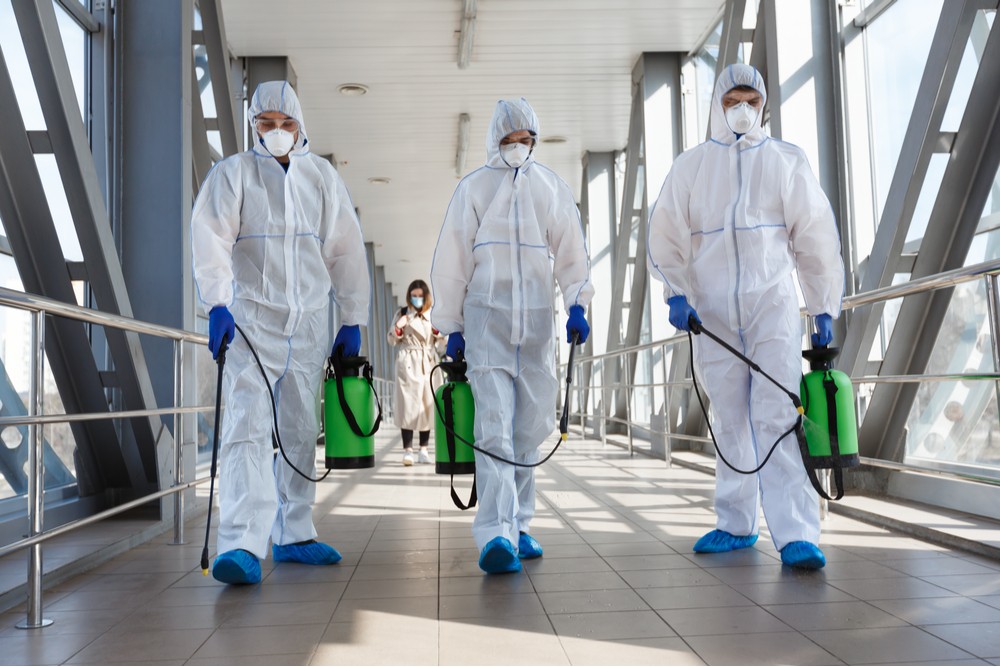
| Most metals such as copper and silver can be used for water disinfection, if they are ionized. Both copper and silver have been applied for centuries because of their biocidal mechanism. Most anti-fouling paints contain copper, reducing the number of marine species growing on the walls of ships. Because of this measure, ships can reach their destination faster.
How are copper-silver ions produced? Copper-silver ionization is brought about by electrolysis. An electric current is created through copper-silver, causing positively charged copper and silver ions to form. What are the applications of copper-silver ionization? Copper-silver ionization became of interest when NASA used copper-silver ionization for drinking water prodcution aboard Apollo space ships in 1960. Because of copper-silver ionization, drinking water could be produced safely in space without the use of chlorine, which causes cancer.. In England, copper-silver ionization is applied in about 120 hospitals successfully for the deactivation of Legionella bacteria. What is the disinfection mechanism of copper-silver ionization? Electrically charged copper ions (Cu2+) in the water search for particles of opposite polarity, such as bacteria, viruses and fungi. Positively charged copper ions form electrostatic compounds with negatively charged cell walls of microorganisms. These compounds disturb cell wall permeability and cause nutrient uptake to fail. Copper ions penetrate the cell wall and as a result they will create an entrance for silver ions (Ag+). These penetrate the core of the microorganism. Silver ions bond to various parts of the cell, such as the DNA and RNA, cellular proteins and respiratory enzymes, causing all life support systems in the microbe to be immobilized. As a result, there is no more cellular growth or cell division, causing bacteria to no longer multiply and eventually die out. The ions remain active until they are absorbed by a microorganism. What are the disinfection applications of copper-silver ionization? Swimming pools and copper-silver ionization In the United States, copper-silver ionization is applied as an alternative for chlorine disinfection. Chlorine use in swimming pools and hot tubs can be reduced by over 80%. Cooling towers and copper-silver ionization Copper-silver ionization is commonly used to kill Legionella bacteria in cooling towers. Legionella in hospitals and nursing homes and copper-silver ionization Drinking water and copper-silver ionization In the United States, several drinking water production companies use copper-silver ionization as an alternative for chlorine disinfection and to prevent the formation of disinfection byproducts. The standard for trihalomethanes was decreased by EPA from 100 to 80 µg/L. When copper-silver ionization is combined with chlorine disinfection, it is an excellent disinfection mechanism to deactivate viruses and bacteria. What are the terms of copper-silver ionization? Firstly, the concentration of copper and silver ions in the water should be sufficient. The required concentration is determined by the water flow, the volume of water in the system, the conductivity of the water and the present concentration of microorganisms. How effective is copper-silver ionization? What are the benefits and drawbacks of copper-silver ionization? Benefits Copper-silver ionization affectively deactivates Legionella bacteria and bio film and it improves water quality. Copper-silver ionization has a larger residual effect than most other disinfectants. Copper and silver ions remain in the water for a long period of time. Because of its local affectivity, the effect is larger than that of UV. Copper-silver is effective throughout the entire water system, even in dead-end points and parts of the system that contain slow-running water. Copper-silver use affectivity does not depend on water temperature. When copper-silver is used, less maintenance to the water system is required. Copper-silver is non-corrosive; it causes less strain on the distribution system. Because of a decrease in the use of chemicals, the lids and pumps are not affected. Furthermore, shower heads, tanks and taps are not contaminated. When copper-silver ionization is applied, there are no transport and storage difficulties. Here’s what you need to know… |